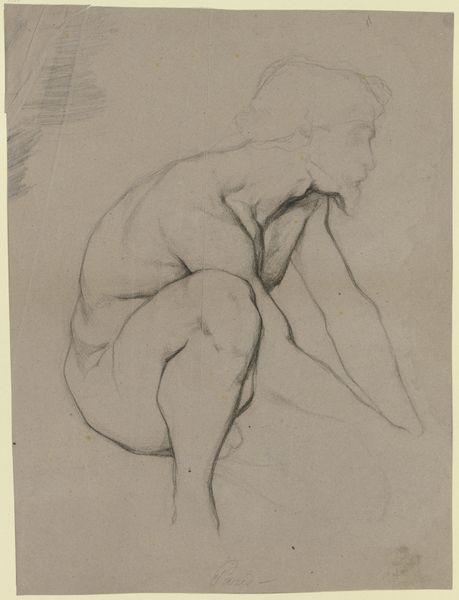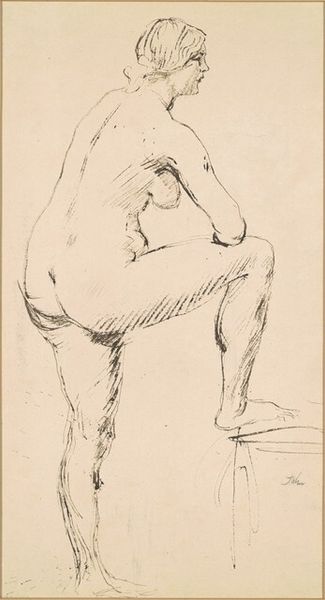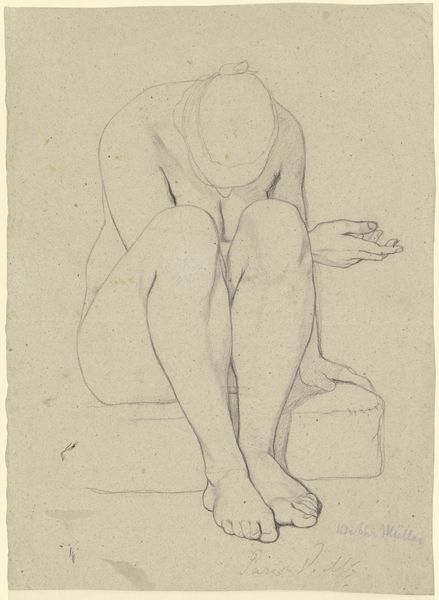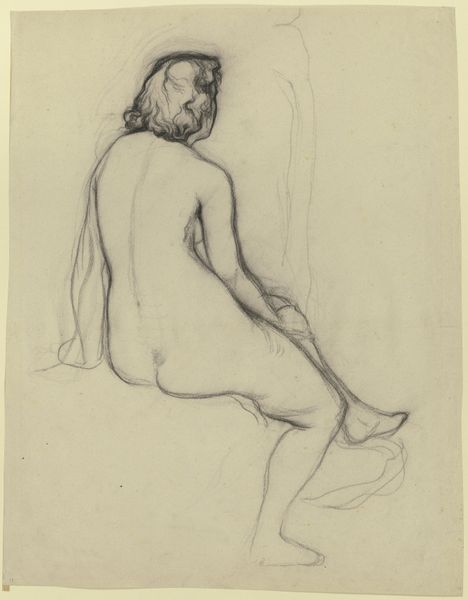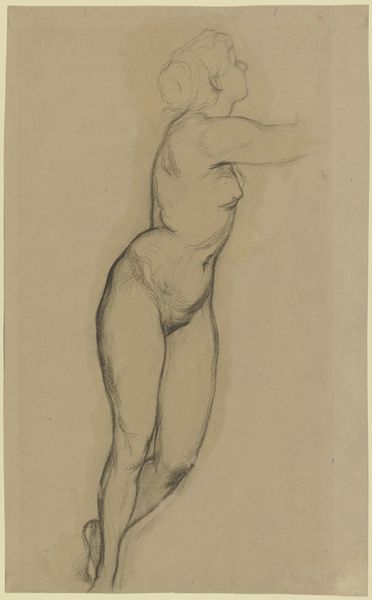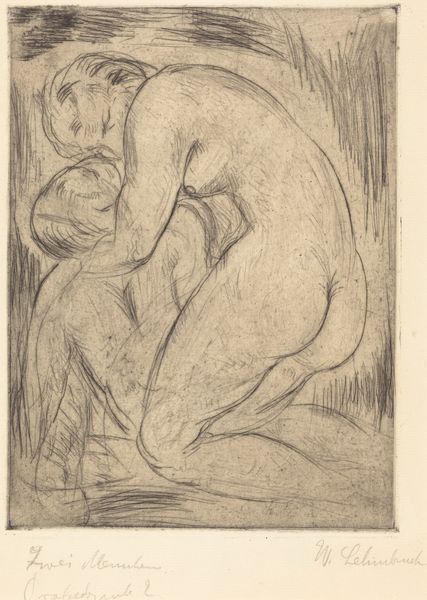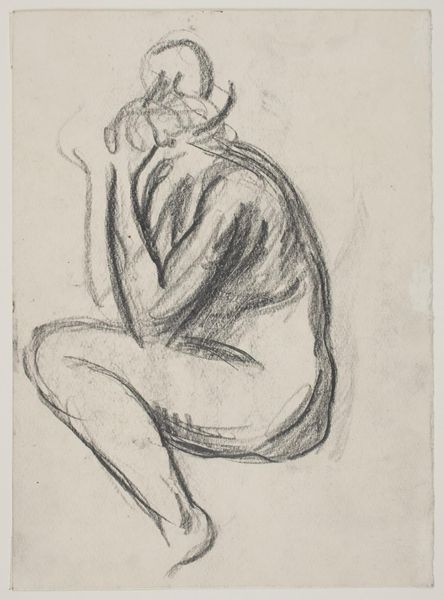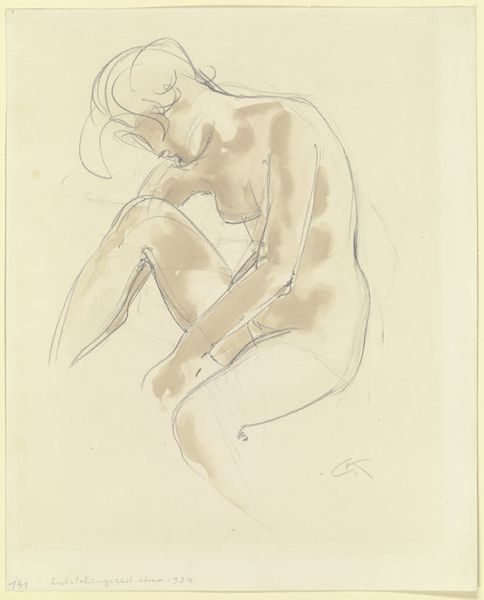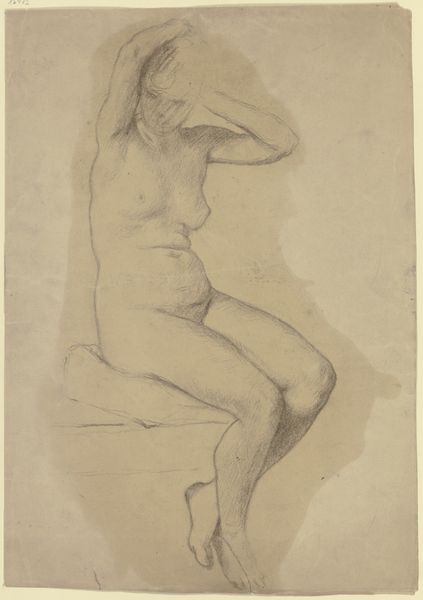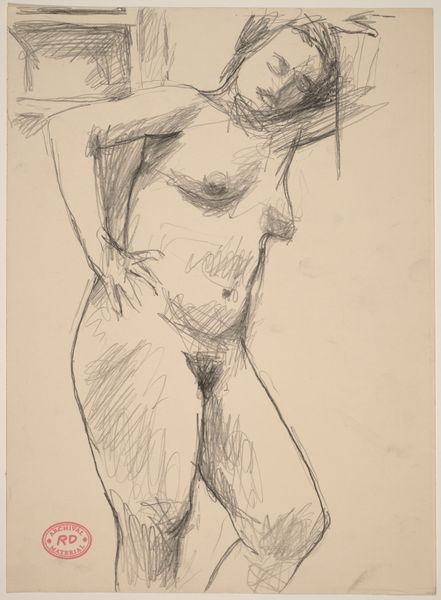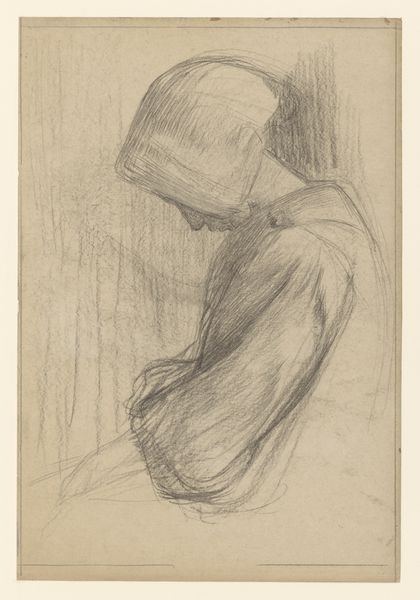
drawing, paper, pencil, chalk, charcoal
#
portrait
#
pencil drawn
#
drawing
#
charcoal drawing
#
figuration
#
paper
#
pencil drawing
#
pencil
#
chalk
#
portrait drawing
#
charcoal
#
nude
#
realism
Copyright: Public Domain
Editor: Here we have Ludwig von Hofmann's "Naked Crouching Girl," a drawing done with pencil, chalk and charcoal on paper. It’s interesting… she looks both vulnerable and self-possessed. What do you see in this piece? Curator: The prevalence of nude studies like this in the late 19th and early 20th centuries reveals a fascinating tension. On one hand, we have academic tradition – the nude as a foundation for understanding form, a display of artistic skill endorsed by institutions. On the other hand, social anxieties are present with evolving ideas about the female body and its representation. Where do you think this work positions itself on the academic vs. socio-political scale? Editor: That’s interesting to think about. Maybe leaning slightly toward academic, because it feels like a genuine study of the human form. Though her expression has something that hints toward a deeper personal introspection too. Do you think Hofmann's decision to depict her crouching impacts how she’s seen by audiences? Curator: Absolutely. The crouching pose – is it defensive, intimate, or something else? It complicates the gaze. A reclining nude invites a particular kind of viewing, a powerful figure, and a crouching figure introduces vulnerability but also perhaps introspection. The pose challenges viewers to contemplate her state of mind. But also challenges the power of their presumed, dominant viewpoint. What are your thoughts about this shifting dynamic? Editor: That makes a lot of sense, and makes me appreciate the drawing much more now! It really underlines the complexity involved in even a seemingly straightforward piece. Curator: Precisely. Considering art in this framework unveils how deeply ingrained socio-political and institutional powers really affect what art gets made, what gets seen, and how it all gets interpreted.
Comments
No comments
Be the first to comment and join the conversation on the ultimate creative platform.

